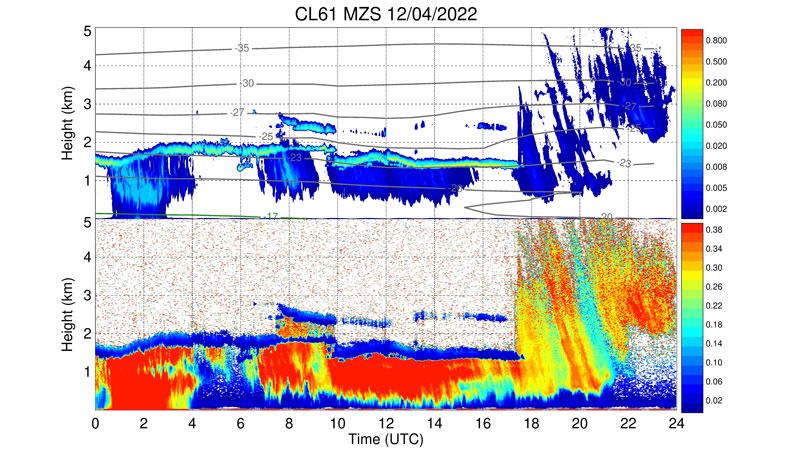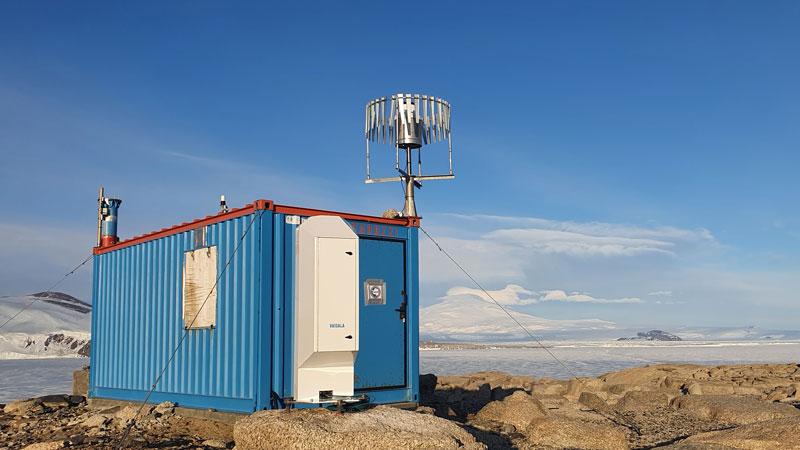Groundbreaking atmospheric insights in extreme polar environments
Studying the formation of clouds in Antarctica with the Vaisala Lidar Ceilometer CL61
During the 37a Italian Antarctic campaign, researchers of the Italian National Agency for New Technologies, Energy and Sustainable Economic Development (ENEA), belonging to the Italian Antarctic Meteo-Climatological Observatory (IAMCO), installed a Vaisala Lidar Ceilometer CL61 in the Mario Zucchelli Antarctic Station. IAMCO is using the ceilometer to study the characteristics and physical mechanisms underlying the formation of clouds for better understanding of climate variability in the polar environment.
The goal of this project is to expand the understanding of climate change by studying the atmosphere of the Antarctic continent and its variations on different time scales.
For over 30 years, IAMCO researchers have managed an automatic weather station network located in Victoria Land and the eastern sector of the Antarctic Plateau; they are also operating the radio sounding program for measuring the atmospheric vertical profiles in the two Italian Antarctic stations, Mario Zucchelli and Concordia.
The challenge: Extreme environment, limited measurements
For more than a decade, IAMCO researchers have used various ceilometers and rain gauges for understanding the characteristics and physical mechanisms underlying the formation of clouds. These factors underlying the formation of clouds are little known, especially in the polar environment, and studying clouds and their properties is important for understanding the climate and its variability. More information and data on cloud formation, composition and relevant phases would significantly improve meteorological model forecasting capabilities for both operational and climatic purposes at various time scales.
Satellites do not provide adequate temporal sampling due to the high periods of revolution of the sensors in orbit. In situ measurement campaigns are expensive, difficult, require a lot of maintenance and are possible only when researchers are in the station. All of these limitations are amplified in the harsh Antarctic region where extreme weather conditions, limited energy sources and stations open only during the short Antarctic summers make traditional instrument measurements of the atmospheric profile almost impossible.
The solution: Lidar Ceilometer CL61
ENEA has used many Vaisala instruments in the past, and thanks to their long-time relationship with local Italian Vaisala partner, Eurelettronica Icas, researchers have appreciated their quality, versatility and robustness. The Lidar Ceilometer CL61 is the last instrument installed. Its technology combines standard ceilometer measurements, like cloud base and ceiling heights, with new depolarization capabilities.
Depolarization allows for precise particle and precipitation type differentiation, enabling dramatically improved situational awareness and forecasting. With its easy integration, low maintenance and data-rich vertical profiles, the CL61 is an outstanding, cost-effective tool for improving decisions and safety across several key applications. It is suitable for continuous in situ measurements.
The benefits: Critical insights for cloud characterization
With the CL61, Observatory researchers are able to obtain information needed to improve the understanding of cloud formation and characterization, even discriminating the phase of the clouds themselves. This is critical for characterizing an area like Mario Zucchelli which is located on the coast of the Ross Sea.
The researchers are observing clouds at different phases (solid, liquid, mixed and supercooled) — a process that previously could only be obtained using much more expensive instruments that are less reliable in this harsh environment.
Installed in December, 2021, the CL61 ceilometer immediately proved to be suitable for this extreme environment including katabatic winds that exceeded 40 m/s. The ceilometer continued to function reliably, even after the seasonal closure of the station in February, 2022.
The data from the CL61 are giving researchers insight into the variety and coexistence of phases in the clouds. In particular, for the first time they are detecting supercooled liquid clouds in the Mario Zucchelli area through in situ measurements with temperatures well below -20° C with very low depolarization.

IAMCO researchers are quickly gaining the measurements and insights needed to accelerate their important mission of climate studies with an accurate, reliable solution that will provide top performance for years to come.
“The Vaisala CL61 ceilometer has improved our climate research. Now, we have in one instrument the capability of in situ cloud measurements and detailed liquid/solid differentiation. Furthermore we can collect data also during the closing period of the station, making research easier, less expensive and with minimal maintenance.” Paolo Grigioni, Researcher, Italian National Agency for New Technologies, Energy and Sustainable Economic Development
In the main photo: CL61 lidar ceilometer installed at the Mario Zucchelli base. Image courtesy of ©PNRA, National Antarctic Project.
For additional information please read also the ENEA news stories

